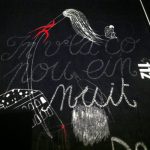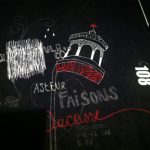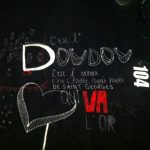Walloon: The Northernmost Romance Language
So there is no resemblance to cacophony perhaps English speakers should stress the first syllable of Francophonie. This oblong word is the alliance of French speaking countries around the world who probably find their language exquisite sounding. Francophonie has members across all continents, but Belgium and Canada have a special status and it’s not for the Poutine or the Moule Frites. They have regional status because a particular region in each of these nations is representative of a strong French language community. In Belgium that community occupies half the country, the southern region called Wallonia and part of Brussels. To the north is Flanders where they speak Flemish, also known as Dutch. A closer look at Wallonia is a far cry from the “morne plaine” (gloomy flatland) description by Victor Hugo about the battle of Waterloo. Instead, red brick townhouses nestle against each other and against the brasseries that liven the mood whilst abundant trees and other greenery obscure the gentle flatness of the region. And the language of Hugo and Moliere is not the only type of French spoken by the villagers and urbanites of Liege, Tournai, Mons, etc. Many also speak Walloon, the name of a Gallo-Romance language in the same family as Modern French but much older!
It all started in late antiquity when Gaul adopted the Latin language and Roman customs. The result was a series of languages called langue d’oïl which evolved separately from Vulgar Latin and Romance languages closer to the Mediterranean. Gauls were found as far north as Antwerp but Frankish invasions in the early Middle Ages pushed the would-be Walloon community southwards. Their langue d’oïl variety is closely related to the Picard dialect of Northern France. Soon enough, however their southern neighbors were absorbed into standardized French. The rest of the story is about surviving between English, German, Dutch, and French linguistic giants.
The most notable linguistic difference is the presence of affricates consonants where French doesn’t have them. The French colors “jaune” (yellow) and “rouge” (red) thus become djaene and rodje to which neur (black) should be added to form the Belgian flag! There is also a retention of the Latin “s” that disappeared in French. “Head” in Walloon is “tiesse” similar to “testa” in Italian. Meanwhile spelling gets even stranger…“adocrexhince” is the word for “adolescence” and this doesn’t even include the “å” or plethora of other characters that Walloon contains. More grammatical in nature is the lack of gender differences in definite articles: “Li” stands for the French “la” (the (f.)) and “le” (the (m.)) not to mention the use of adjectives before nouns.
Yet these and other linguistic particularities are still not enough to prevent an intrusive Frenchman from deciphering the speech of Walloons. The vocabulary may be the solution, often from Germanic or, interestingly, distant Latin roots. One example of the second case is “dispierter” (to awake) related to the Spanish “despertar” through Latin but not the French “réveiller”. Like Latin “nona” and English “noon”, Walloons say “nonne” whereas the French say “midi” when lunchtime rolls around. A more Germanic loan word might be “spraute” (sprout) which are, as everyone knows, popular in Brussels or “flåw” (weak) like the Dutch “flauw). At least French people with relatives in Wallonia will be relieved that “father, mother, sister, brother” is “pèr, mere, sour, fré”!
Today the Walloon community has diminished to include just over a couple million speakers, very few of which are youths. Furthermore regional languages are not well appreciated in the divided Belgian government. Walloon’s presence is acknowledged though not explicitly so and efforts for recognition by the Council of Europe have gone by the wayside. The Union Culturelle Wallonne, an organization promoting cultural events, is the best hope for the ancient language to flourish alongside the eclectic but rich heritage that is La Francophonie.
A superb illustration of local Walloon dialect can be seen on the carpeting of the Hotel Dream in Mons (http://www.dream-mons.be/en/) showing excerpts of songs, taken from the local folklore, colorful citations, colloquial expressions along with delightful drawings of the annual festival and daily life. One can learn about the local language and festivities just by walking to one’s room when staying in the hotel. Well worth the visit.
For an overview of our translation expertise, visit our media and marketing translation page.
Category: Foreign Language











